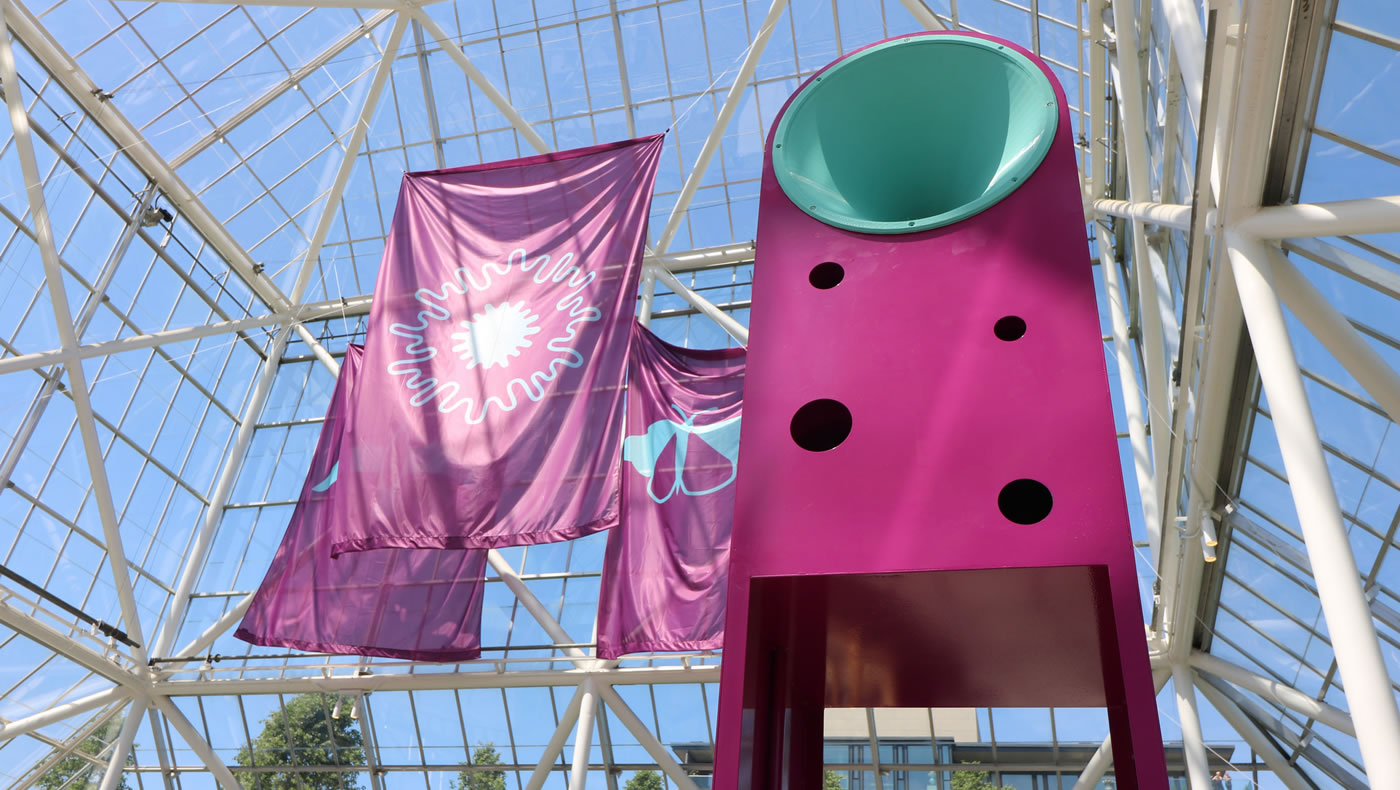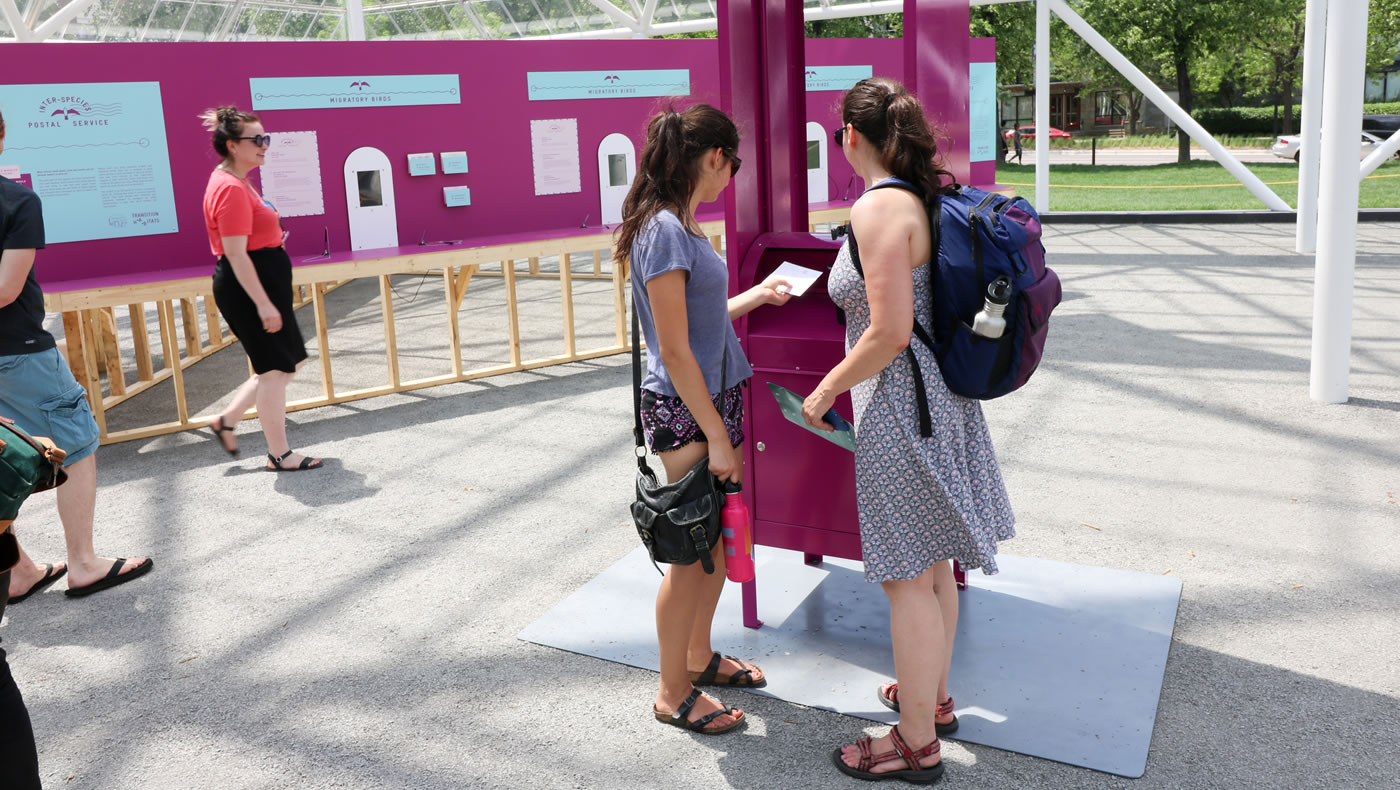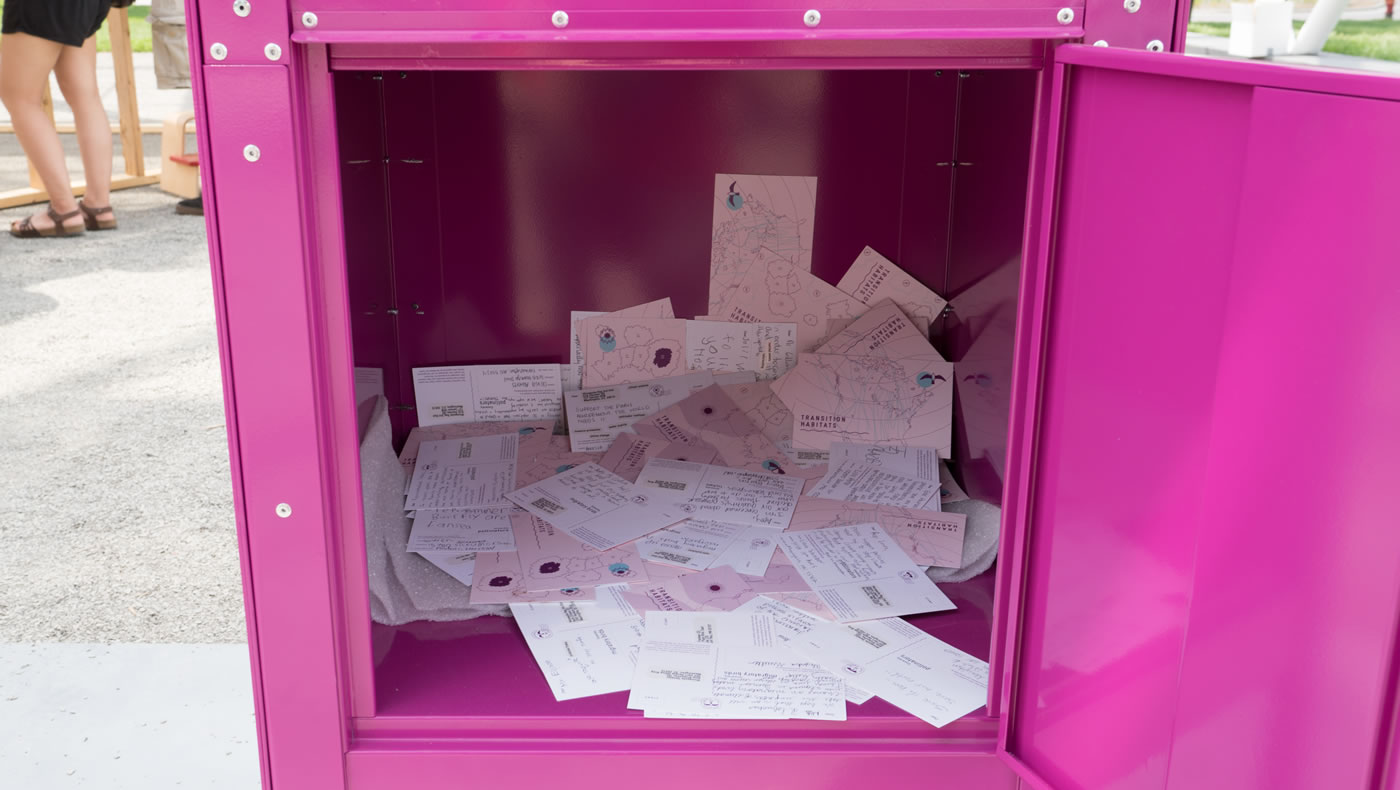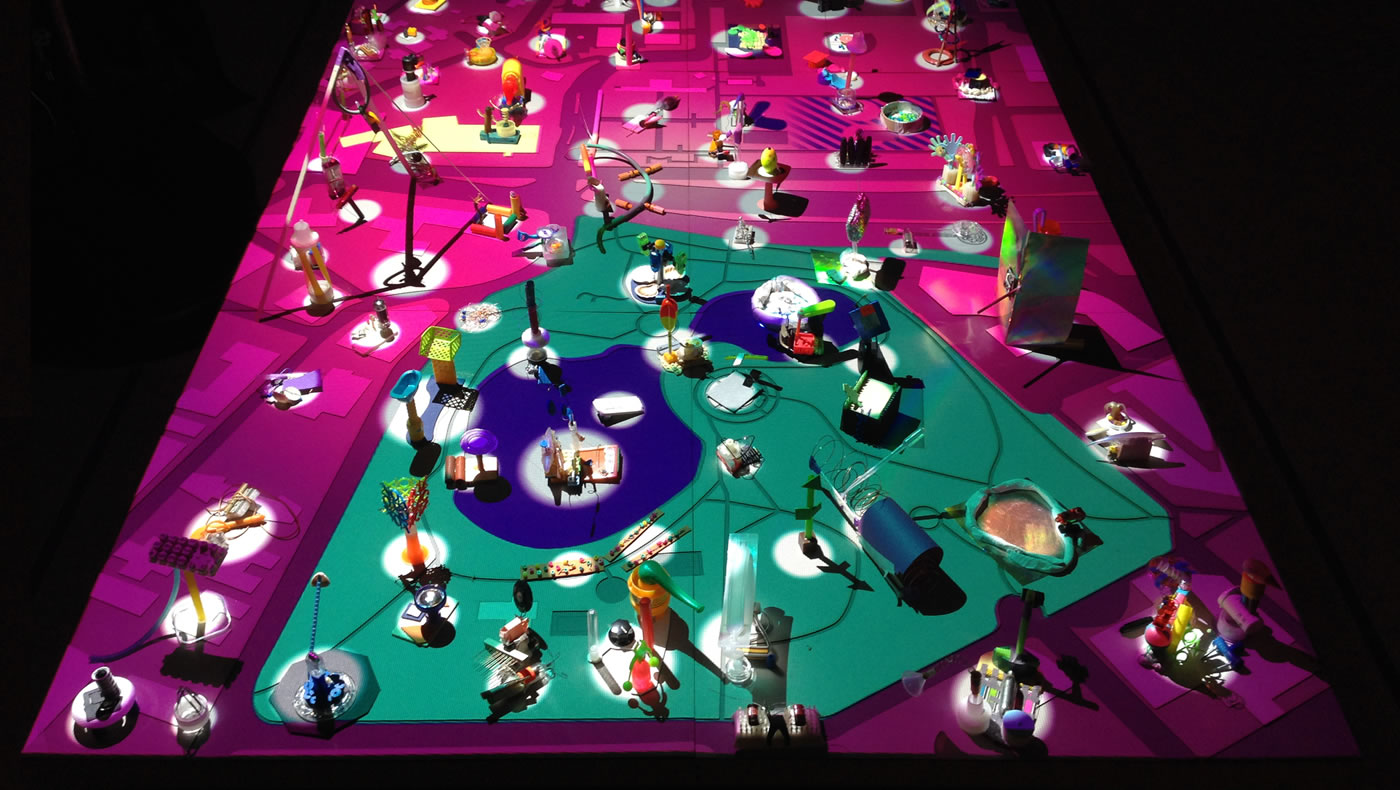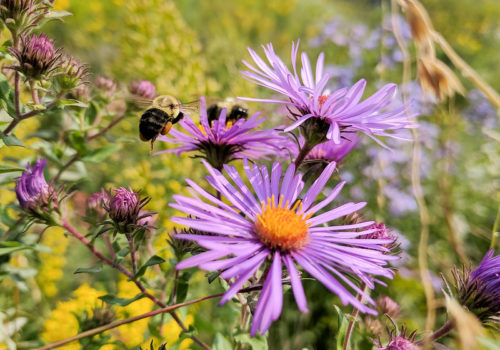News / June 22, 2017
Transition Habitats make their debut at the Minneapolis Sculpture Garden

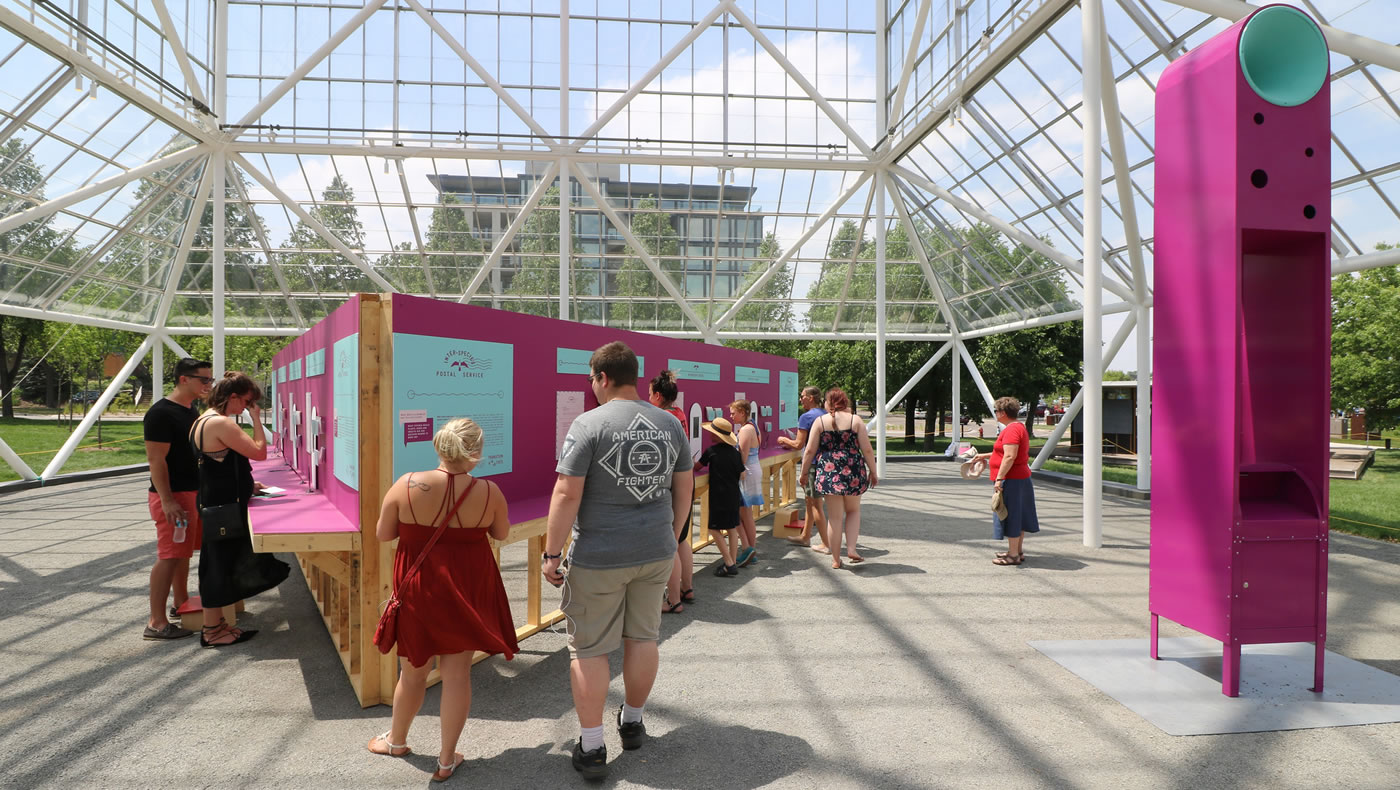
If you’ve visited the newly reopened Minneapolis Sculpture Garden, you might have noticed a bright pink mailbox with an attached wildflower bed at the garden’s north end. Indeed, this eye-catching installation is hard to miss. But it’s more than just a work of art; it’s also a kind of experiment designed to help us understand how certain wildlife species are being impacted by climate change.
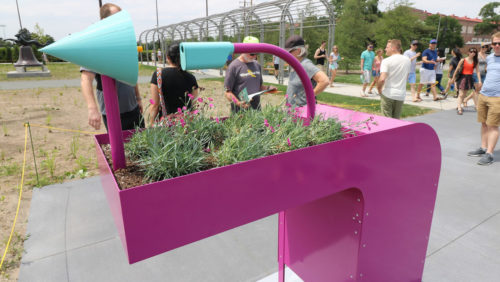
A camera mounted on the mailbox captures images of Monarch butterflies and other pollinators, providing a glimpse of the number and diversity of species present. Over time, artists Elliott P. Montgomery and Chris Woebken hope that information gathered from these photos will help citizens, scientists and decision-makers learn more about how various indicator species — those whose behaviors or presence is predicted to shift as a result of climate change — are being affected.
The pollinator box is one of three mailbox installations that are part of the Transition Habitats temporary installation at the Sculpture Garden. The exhibit is framed as an opportunity for the public to listen to non-human species and then interpret their messages as ideas for the future. The mailboxes are symbolic conduits of information from wildlife to humans as well as common pieces of urban infrastructure that the artists propose could be shared to help support wildlife.
The Project
Montgomery and Woebken founded The Extrapolation Factory, a design-based research studio in Brooklyn, New York. They developed the Transition Habitats project for a residency at the Walker Art Center in the winter of 2016. During the residency, they invited Walker visitors to participate in a visioning exercise by imagining how human and natural systems could overlap in the future. They asked them to consider the questions: How will wildlife cope with ecological and water quality challenges that we will face as our climate changes? How might we design for ecosystems in transition? Is it possible to create shared habitats that will accommodate our evolving human and natural systems?

Through this process, visitors helped develop a series of designs for experimental shared habitats through modifications to urban infrastructure. From beehives built in highway sound barriers to migratory bird houses in playgrounds, they provided a range of creative habitat solutions. Montgomery and Woebken then began to the process of refining the ideas and the momentum behind the project and driving them into the next phase: building prototypes.
With funding from an MWMO Action Grant, the Extrapolation Factory returned to the Walker for Phase 2 of the Transition Habitats project —a 10-day residency that would coincide with the grand opening of the reconstructed Sculpture Garden. Using inspiration from ideas generated during Phase 1, the designers worked with a community of biologists, ecologists and other researchers to further develop the concept of shared habitats. They identified three indicator species (or groups of species) on which to focus the habitat and data gathering efforts. They researched their habitat needs, the impacts of climate change on each species, and considered the best ways to support them and learn from them over time.
The result of this second phase is the Transition Habitats exhibit, consisting of three shared habitats, all built on standard mailboxes. The mailboxes were chosen not only for their ubiquity, but also because they symbolize the importance of communication in environmental protection efforts. Each mailbox provides a supportive habitat for a particular indicator species or group of species and also has a way to gather data about the status of the species. In addition to the mailbox habitats, the exhibit includes interactive and interpretive components that explain the project to visitors and ask them to listen and communicate on behalf of wildlife.
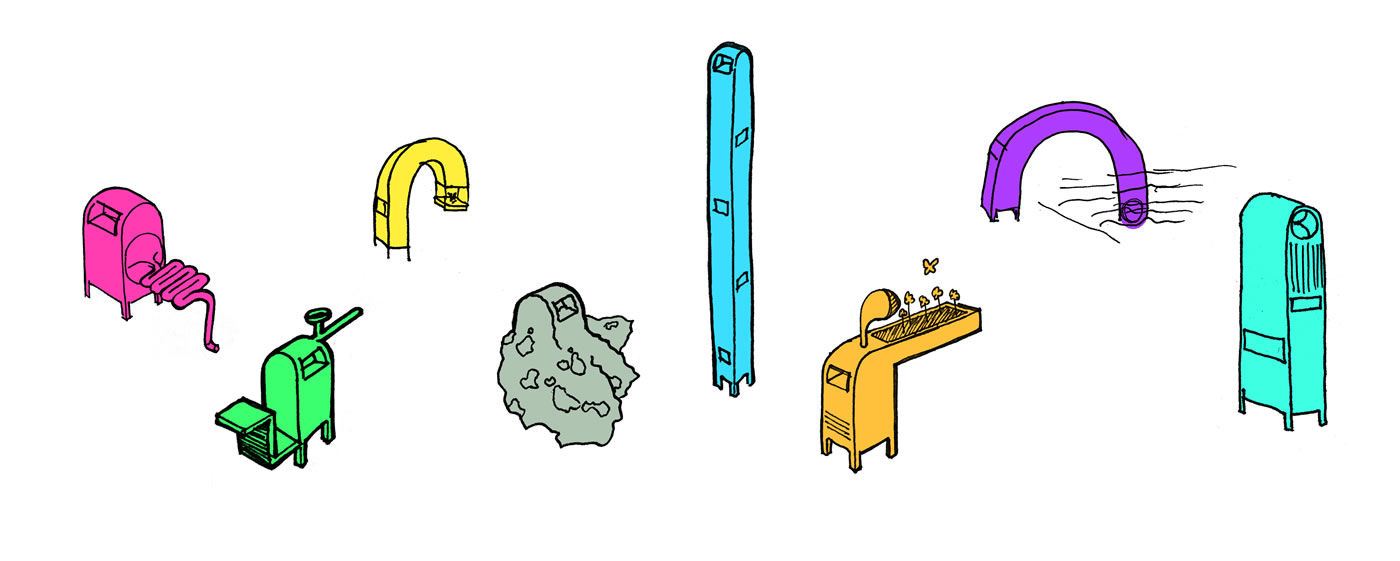
The Exhibit
In addition to the pollinator mailbox, a 12-foot-tall mailbox sits in another part of the Sculpture Garden. Built to attract warblers and other migratory birds, this habitat has built-in recording equipment that will pick up their calls and songs. Data collected here will shed light on the diversity of bird species present and changes in migratory patterns — a serious concern along the critically important Mississippi River flyway.
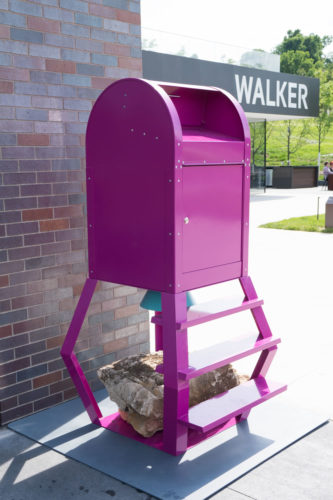
The third mailbox provides shade for a large boulder covered with lichen. An often under-appreciated organism, lichen is an important indicator of air quality. Photos taken by the embedded camera over time may give us clues about whether and how our air quality is changing.
The hub of the exhibit is the Inter-Species Postal Service office, housed in Cowles Pavilion. This interpretive area is where the public can learn about the mailbox habitats and the three indicator species (monarch butterflies, warblers, and lichen). They can also discover how information gathered from the mailbox habitats might help us plan for and support these species as our climate changes. Human visitors to the Inter-Species Postal Service are invited to write postcards on behalf of the indicator species with ideas and suggestions for supporting and conserving them.
The Transition Habitats exhibit at the Sculpture Garden will be open through June 25. After that, the mailbox habitats will move to more permanent homes, the locations of which are still to be determined. Montgomery and Woebken plan to work with the future hosts of the mailboxes to continue to gather and compile data from the mailbox habitats and share them with the public. Stay tuned.
You can learn more about the project on The Extrapolation Factory’s website.
